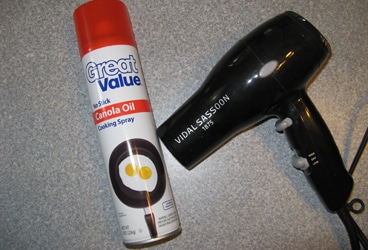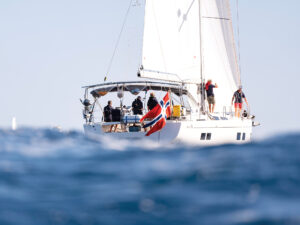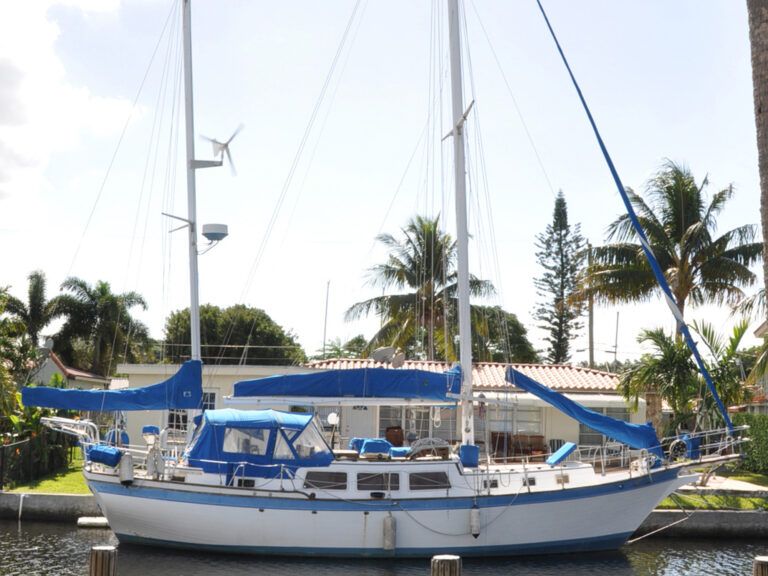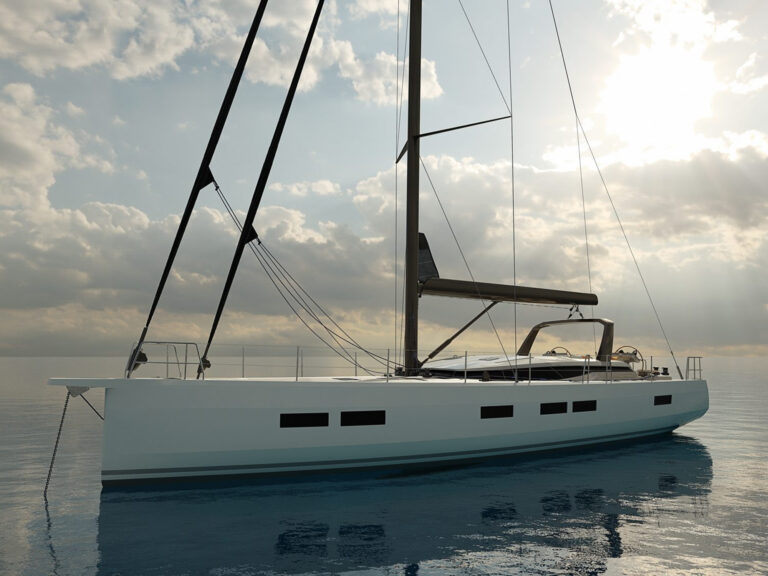
Tools for fridge defrosting
The following is an excerpt from The Boat Galley Cookbook_ by Carolyn Shearlock and Jan Irons_
One key to keeping your boat refrigerator running efficiently is to defrost whenever there is 1/4 inch of frost built up. In the tropics, I had to defrost about once a month. This doesn’t have to be a huge chore—with a hair dryer and inverter (or shore power), I could defrost ours in about 35 minutes. (Be sure to read my notes at the bottom of this article if you don’t already have a hair dryer on board.)
In this age of frost-free refrigerators, many of us have never manually defrosted a refrigerator—or only have dim memories of mom doing it when we were a kid. It took me a while to learn how to quickly defrost the refrigerator, so I didn’t dread having to do it. It helps if all your food is already in bins. If you’re in a hot climate, you have to work fast so that food won’t spoil.
Here’s my method:
• Put your most perishable foods (frozen foods, milk) in the best coolers you have. I like soft-sided coolers on the boat because they’re easy to store — the Polar Bear 24-can and 48-can coolers aren’t cheap, but really work well both for defrosting and getting stuff back to the boat from a distant store — if the items are already frozen, they’ll stay that way for a couple of hours even without extra ice if you’ve got a good cooler.
• Take all your bins out of the refrigerator. Quickly check to see if any need cleaning out, either from spills or spoiled food and take care of it now. Cover the bins with quilts, towels, pillows, sweatshirts or whatever else you have to insulate the contents.
• Turn off the refrigerator and remove all dividers. If there is a drain in the bottom, open it (see my article on why the drain should be closed for everyday operation).
• Use a hairdryer to melt the ice build-up. Be careful not to actually get the hairdryer in any water, due to the electrocution risk. Many times, the hairdryer will cut off before all the ice is melted – this is a safety feature to keep it from getting too hot. Turn it off for a few minutes and let it cool off, then use it again.
• Break off chunks of ice from the chill plate as possible and dump them in the sink. It is much easier to dry out the refrigerator if you don’t let them melt in the bottom of the refrigerator.
• Be very careful around the chill plate or freezer compartment not to puncture a tube, but use a dull knife to gently poke ice out of hard-to-reach places. Use the hairdryer to loosen it up if necessary – never use force, as you’re likely to break something and then you’ll be without a refrigerator.
• When all else fails, you can pour hot water over a stubborn bit of ice – but this will create a lot more work to mop it all out of the bottom of the refrigerator if you don’t have a drain.
• Totally dry out the refrigerator, close the drain and replace any dividers before putting food back in the refrigerator. Any moisture left in the refrigerator will quickly turn to frost and ice, necessitating another defrosting job.
• EXTRA TIP from Debi on Facebook: spray the cool plate with cooking spray (like Pam) before you put everything back in. When you next defrost, the ice will come off much more easily and in big chunks!
• Don’t forget to turn the refrigerator back on!
A FEW NOTES ABOUT USING A HAIR DRYER ON BOARD: If you don’t already use a hair dryer on board — and most cruisers have hair styles that don’t require one — there are a couple of things to consider.
Most blow dryers are 1875 watts, although most mini-dryers are 1600 watts. Both are going to require a 2000-watt inverter and won’t work on the little inverters that plug into a cigarette lighter. You can also run one off shore power or a generator that puts out at least 2000 watts.
I actually prefer using the mini dryers as the shorter nozzle is easier to use in the confines of a refrigerator and it’s easier to store. You don’t need one with a lot of features — I bought the cheapest one I could find.
Try to find a dryer with a long enough cord that you don’t have to use an extension cord — or make sure that you’ve got an extension cord on board.
What’s the power draw to use a hair dryer on an inverter? If you use an 1600 watt dryer on high for a total of 6 minutes (and if you keep the refrigerator defrosted regularly, I doubt if you’ll need to use it that long), you’ll use a little under 14 amp-hours from a 12-volt battery bank. If you don’t have a lot of solar or wind-generation power, this can be a good project on a day when you’re going to be motoring a bit so that you’ll have plenty of power to replenish the batteries.
Do you have a simple solution for a problem on board? Send your idea and a photo to HOS@cruisingworld.com. If we use your tip in the newsletter, we’ll send you a cool Cruising World_** Hands-On Sailor t-shirt!**_








